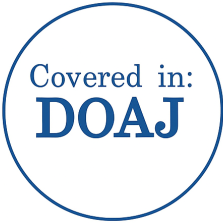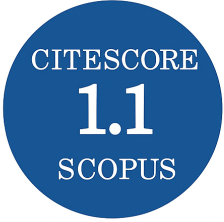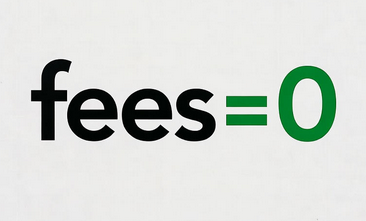Measurement of Flash Intensity at the Muzzle of a Firearm and Possible Protection against its Effects
DOI:
https://doi.org/10.3849/aimt.01843Keywords:
nightvision, photocatode, muzzle flash, image intensifier tubeAbstract
The constant increase in sensitivity of night vision devices used as weapon sights means that the photocathode may be permanently degraded or overexposed, and microchannels may be ”burned out” by muzzle flash of weapon firing. This is manifested by uneven sensitivity of the photocathode surface or black dots in the field of view. The aim of this paper is to analyze the magnitude of the risk of damage to the image intensifier tube by muzzle flash during a shot and, based on this analysis, to propose possible ways of protection of the image intensifier tube from the effects of muzzle flash during a shot.
References
GRUZEVICH, Y.K. Night vision opto-electronic devices (in Russian). Moscov: Fizmatlit, 2014. ISBN 978-9221-1550-6.
BULINOVA, I. Possibilities of protecting the photocathode of night sights of hand-held automatic weapons [diploma thesis](in Czech). Brno: Univerzita obrany, 2022.
JUNEDUL, M. and M. MUNTJIR. Night Vision Technology: An Overview. International Journal of Computer Applications, 2017-06, 167, pp. 37-42. DOI 10.5120/ijca2017914562.
FISCHER, P., J. BUCHOLCER, T. BALAZ, Z. ˇ REHO ˇ R and F. RACEK. ˇ Scriptum: Optical instruments II (in Czech). Brno: Univerzita obrany, 2004.
Photonics. [online]. [viewed 2023-02-01]. Available from: www.photonis.comproducts/image-intensifier-tube
MCNAB, C., R. BUJEIRO and A. GILLILAND. German automatic rifles 1941-45: Gew 41, Gew 43, FG 42 and StG 44. Osprey, 2013.
PROCHAZKA, S., P. SEMAN and M. VONDR ´ A´ CEK. Additional Effect of Gases on Strain Gauges at Barrel Muzzle. Advances in Military Technology, 2022-02, 6(2), pp. 29-38. Available from: https://aimt.cz/index.php/aimt/article/view/1602
KASTEK, M., R. DULSKI, P. TRZASKAWKA, T. PIA?TKOWSKI and H. POLAKOWSKI. Spectral measurements of muzzle flash with multispectral and hyperspectral sensor. Proceedings of SPIE - The International Society for Optical Engineering, 2011-06, 81933. DOI 10.1117/12.900971.
CARLUCCI, D.E. and S.S. JACOBSON. BALLISTICS - THEORY AND DESIGN OF GUNS AND AMMUNITION. USA: CRC Press, 2008. ISBN 978-1-4200-6618-0.
SCHMIDT, E. M. and W.G. THOMPSON. The effect of muzzle device configuration on the blast overpressure levels on the AH-1S Helicopter Tow Sight Unit. Aberdeen Proving Ground, 1983.
STEWARD, B.J., G.P. PERRAM and K.C. GROSS. Modeling midwave infrared muzzle flash spectra from unsuppressed and flash-suppressed large caliber munitions. Infrared Physics & Technology, 2012, 55(4), pp. 246-255. ISSN 1350-4495. DOI https://doi.org/10.1016/j.infrared.2012.04.005.
LuckyLight - datasheet. [online]. [viewed 2023-05-03]. Available from: www.tme.eu/cz/details/ll-503ptc2e-1ad/fototranzistory/luckylight/ [online]. [viewed 2023-05-03].
VEKRBAUER, J. Diploma thesis: Measurement of photometric characteristics of muzzle flash using a high-speed camera (in Czech). Brno: Univerzita obrany, 2022.
CHRZANOWSKI, K. Review of night vision technology. Opto-Electronics Review,2013-03, 21. DOI 10.2478/s11772-013-0089-3.
Infrared MEO-50. [online]. [viewed 2022-08-09]. Available from: www.infrared.cz/Produkty/Zamerovace/Meo50/
Downloads
Published
Issue
Section
Categories
License
Copyright (c) 2024 Advances in Military Technology

This work is licensed under a Creative Commons Attribution-NonCommercial 4.0 International License.
Authors who publish with this journal agree to the following terms:
1. Authors retain copyright and grant the journal right of first publication with the work simultaneously licensed under a Creative Commons Attribution License that allows others to share the work with an acknowledgement of the work's authorship and initial publication in this journal.
2. Authors are able to enter into separate, additional contractual arrangements for the non-exclusive distribution of the journal's published version of the work (e.g., post it to an institutional repository or publish it in a book), with an acknowledgement of its initial publication in this journal.
3. Authors are permitted and encouraged to post their work online (e.g., in institutional repositories or on their website) prior to and during the submission process, as it can lead to productive exchanges, as well as earlier and greater citation of published work.
Users can use, reuse and build upon the material published in the journal for any purpose, even commercially.






